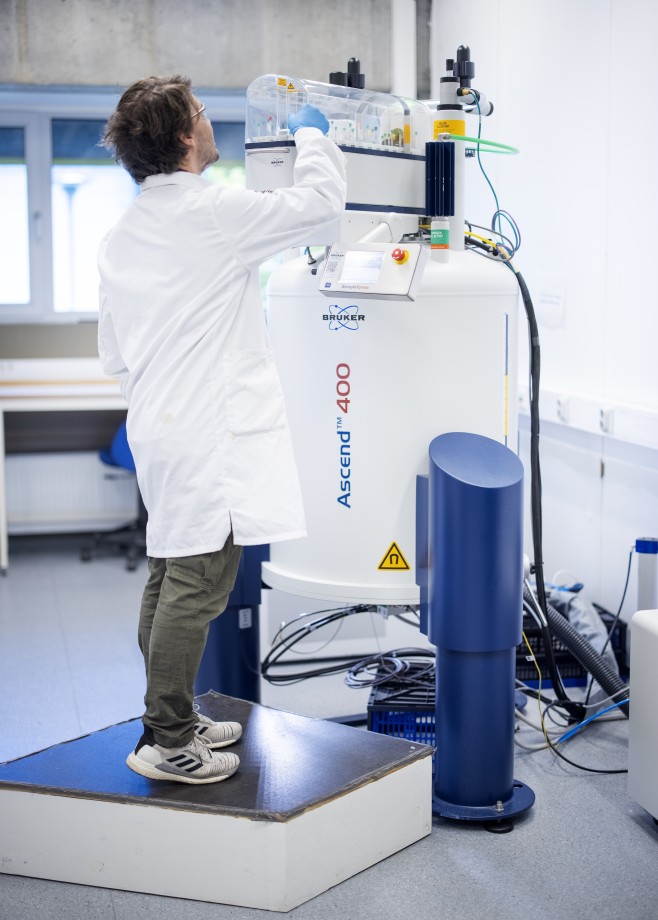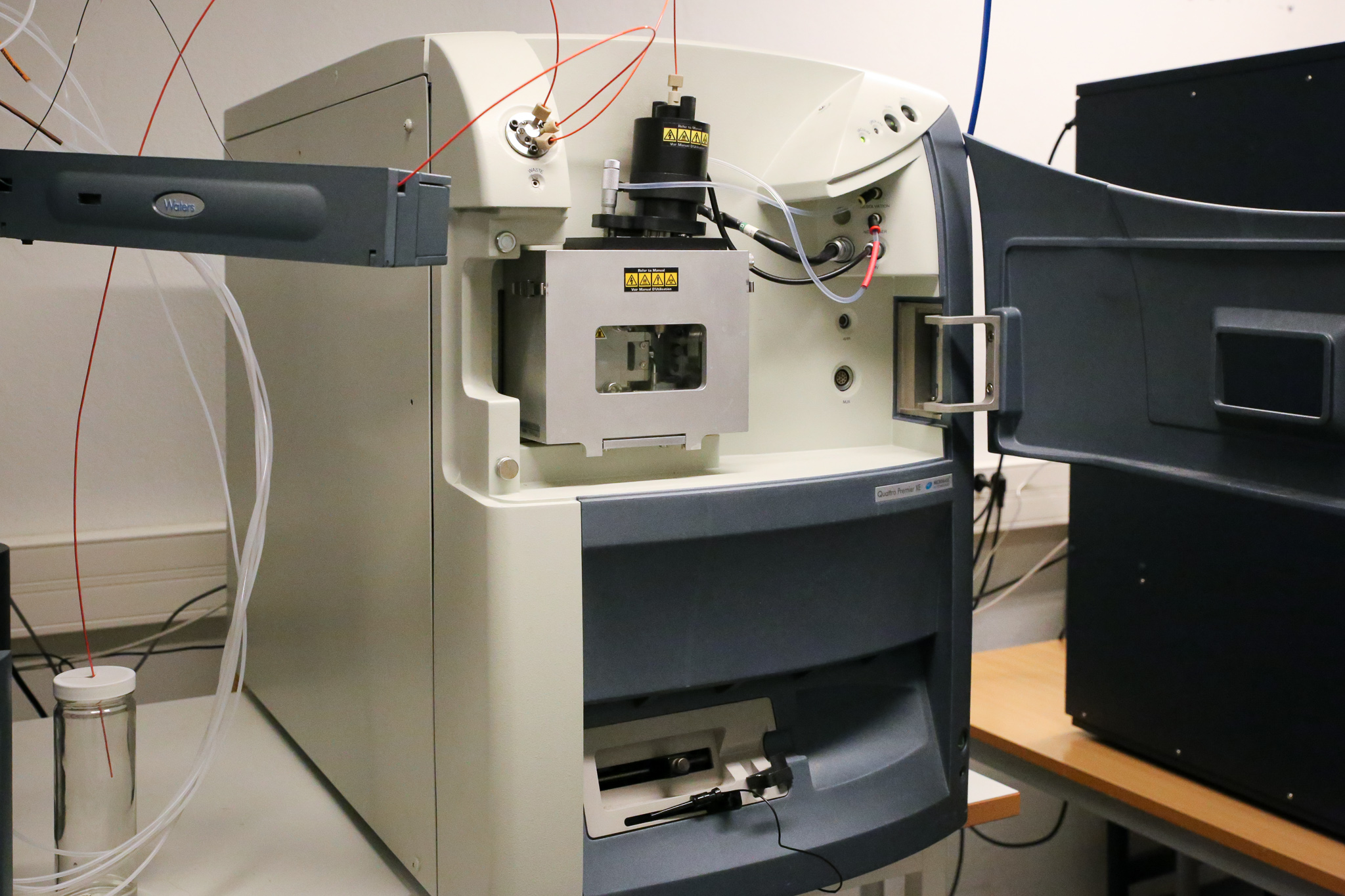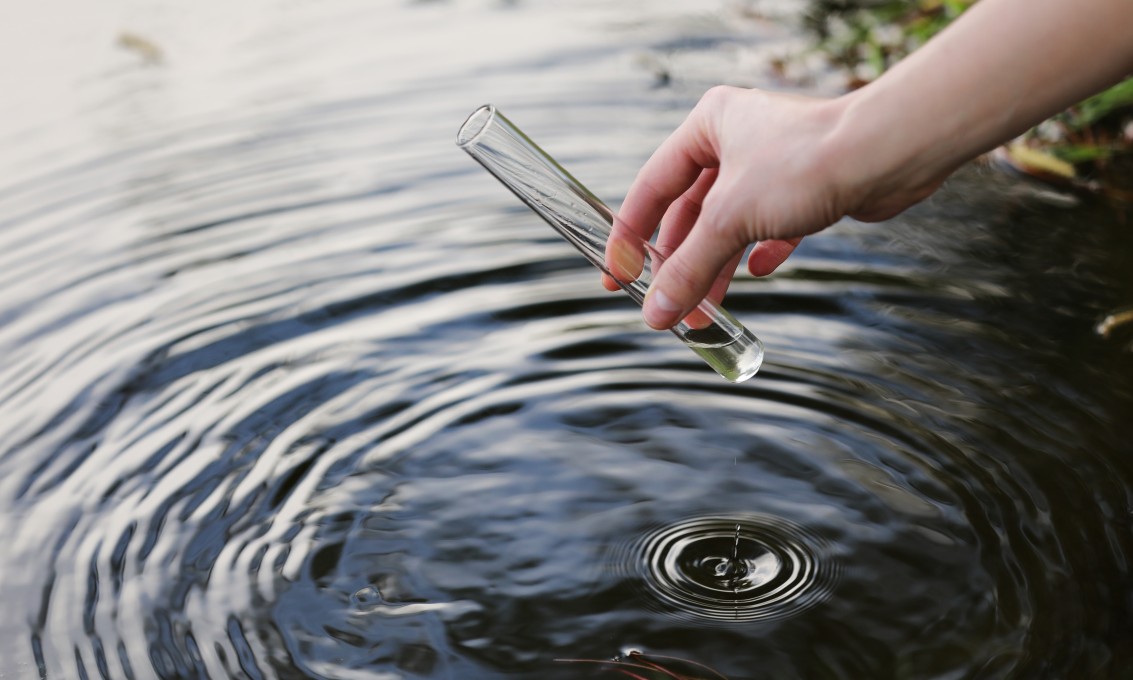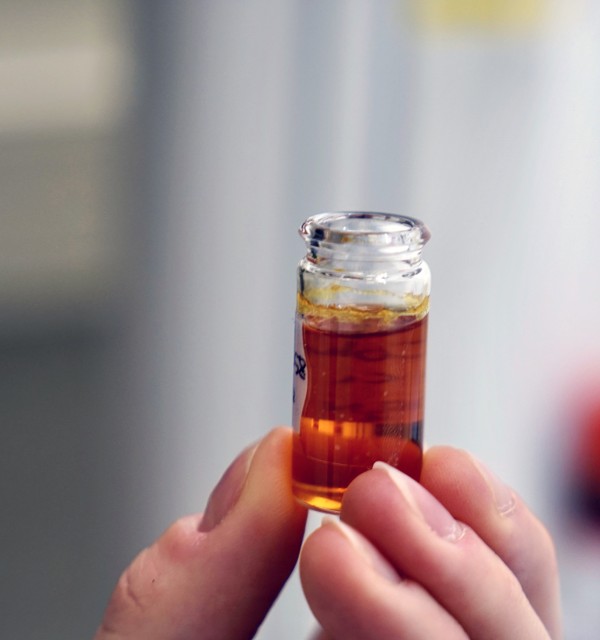The Faculty of Science and Technology at UiS has several laboratories within the field of chemistry and environmental technology. Here is an overview of relevant equipment and facilities.
These study programmes use the laboratories in teaching:
NMR
Nuclear magnetic resonance spectroscopy (NMR) is an ideal analytical technique used for determining the content and purity of a sample and its molecular structure (mainly smaller organic molecules).

Laboratoriet blir brukt til både undervisning og forskning.
Contact person: Erling Berge Monsen
Respiromitry
Respirometry involves measuring and interpreting biological oxygen demand. Oxygen consumption is directly associated with microbial consumption of substrate. A respirometer is a device used to measure the respiration rate as a change in the amount of oxygen over time.

Oxi-Top is used for static measurement of biological oxygen demand. Change in oxygen concentration is measured by pressure change in the system.
Micro Oxy Max measures biological oxygen consumption dynamically. Oxygen change is analyzed by oxygen detector.
BM-EVO2 is a laboratory analyzer of respirometry of two reactors that can run simultaneously and on independent form. BM-EVO2 can be a fundamental tool for design, modelling, control and protection of the biological process of a wastewater treatment plant (WWTP). It could also be used as screening instrument for industrial wastes and compost assessment. The respirometry principle is based on the oxygen uptake by the microorganisms contained in the genuine activated sludge from the own biological reactor of the treatment plant.
Contact person: Ilke Pala-Ozkok
Mass spectrophotometry
Mass spectrophotometry is an analytical technique based on measurement of mass to charge ratio of the analyte. Quantitative and qualitative data may be obtained depending on instrumentation and methodology.

The technique is widely used is a detector as a part of a chromograph system but can also be used standalone.
At UiS we have two GC-MS (single quadropole) systems and two LC-MS/MS (double) for separation and identification of samples. Our standalone electron spray MS (single quadropole) is used for quick identification of single components sample, either directly from a TLC plate or syringe injection.
Contact person: Kjetil Bårdsen
Chromatography
Chromatography is a technique used for separation of complex mixture into single components for identification or further analysis. Separation occurs because of the different components in a mixture interact with the mobile and stationary phase.

There are many types of chromatography, for example gas chromatography, liquid chromatography, size exclusion chromatography and ion exchange chromatography.
Contact person: Kjetil Bårdsen
Spectrophotometry
Absorption spectroscopy is routinely used in analytical laboratories for quantitative and qualitative analyses. The technique is fairly simple, as light (UV, Vis or IR) is pased through a sample some of the light will be absorbed. The amount of light absorbed is detected.

At which wavelength and how much light is absorbed depends on the chromophores in the molecule.
At UiS we can perform analysis with 1cm and 5 cm cuvettes, and on test tubes (~16mm).
Contact person: Kjetil Bårdsen
You might also be interested in:
He has 3D printed a training model for spinal anesthesia
Øyvind Time's master's thesis can help make everyday life easier for healthcare personnel who must learn how to take a f...
The transition of the oil cities Stavanger and Macaé
Carlos Eduardo Lopes da Silva has compared the two oil cities Stavanger and Macaé in Brazil.
Whole Slide Imaging, Digitalization and Automation of Histopathological Lesion Evaluation in Marine Organisms
Use of histopathology to identify changes in marine species in response to contaminants is a long-known practice.
Can blueberries prevent dementia?
Drinking juice with a lot of antioxidants, for example from blueberries, can be beneficial in preventing dementia. New r...
Functional materials and process chemistry group
We are developing functional materials and process chemistry for energy and environmental applications.
UiS partner in new One Health project
The purpose of the new research project is to support advancement of Blastocystis research by bringing together professi...
One Health – connecting human, animal, plant and environment health
Our planet faces many challenges that we can only tackle in an interdisciplinary manner. The One Health ambition encompa...
SØLSTAIN: Red seaweed reproduction, growth and nutritional quality
Our research aims to contributing on a sustainable use of the red seaweed Palmaria palmata in aquaculture. The work focu...
Sanocean
Marine Sewage Outfalls – Environmental Impact Evaluation (SANOCEAN) focusing on ocean research including blue economy, c...
Funding for new research project on intestinal diseases
University of Stavanger (UiS) and Stavanger University Hospital (SUS) will work together to find solutions for patients ...
What's the role of bacteria in the gut of patients?
Could the bacteria in our guts help us improve cancer treatment? This is one of the key questions in a new research coll...
One health, one world
How can we achieve better health for humans, animals, and the environment? This is the challenge students and researcher...
Ecotoxicology and environmental monitoring
Our research mainly focuses on the development of biological markers using molecular biology techniques for the purpose ...
Department of Chemistry, Bioscience and Environmental Engineering
Department of Chemistry, Bioscience and Environmental Engineering is focused on research, innovation and education in th...
















